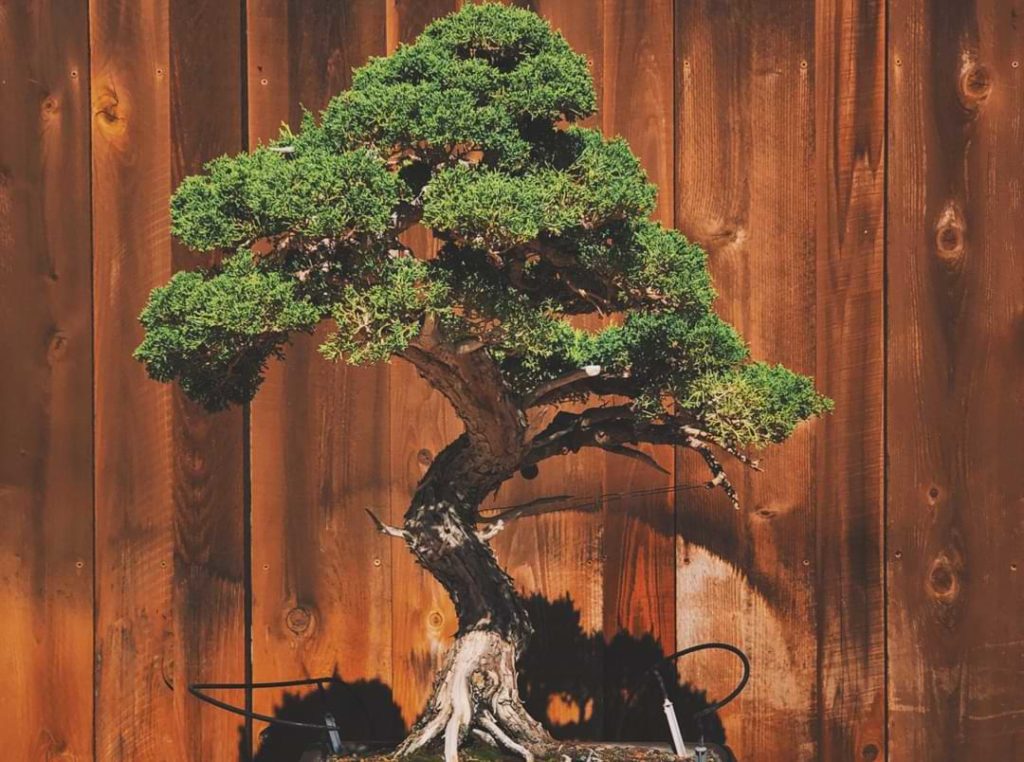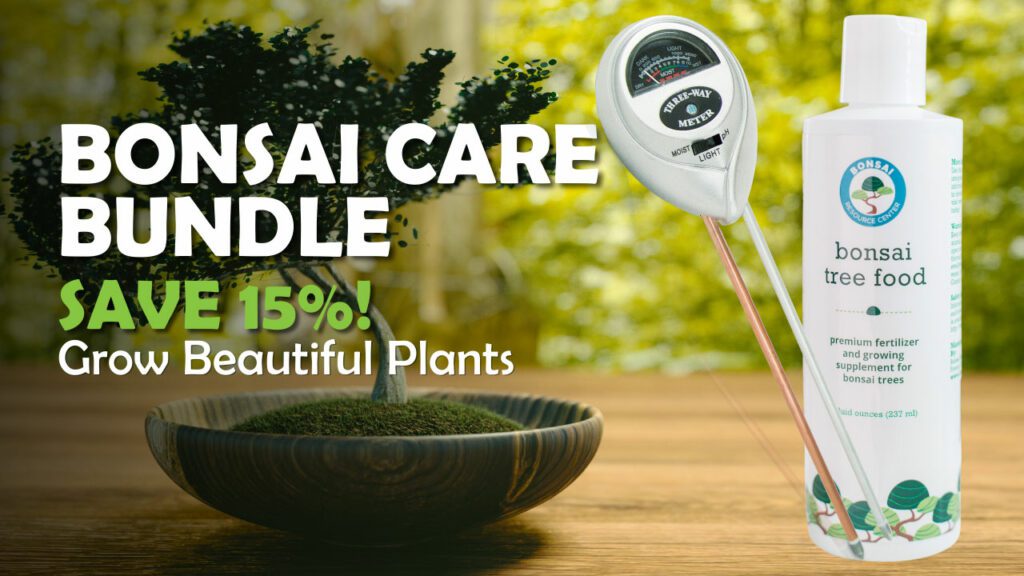Translated literally, the word “bonsai” means “planted in a container.” And while there are several horticultural practices that feature dwarf plants grown in shallow soil, Japanese bonsai trees are particularly well known throughout the globe.
When you begin a bonsai practice, you’re participating in a tradition that originated over 1,000 years ago in ancient China, evolved in Japan and other parts of Eastern Asia, and—hundreds of years later—spread throughout the entire world.
To truly appreciate and honor Japanese bonsai today, it’s important to understand the art form’s roots: where it came from; what influenced its evolution; and the characteristics that define the style.
Ready? Let’s dive in!
Japanese Bonsai Trees Explained
Japanese bonsai are living pieces of art that mimic the natural world. The ultimate goal is to create a miniature, realistic representation of a tree one might see growing in the wild. A popular misconception, bonsai aren’t genetically dwarfed plants; in fact, nearly any tree can be grown in bonsai form.
Japanese bonsai trees are grown to embody three aspects of zen Buddhism: balance, harmony, and simplicity. In this practice, the tree itself is the key element, and the bonsai container is carefully chosen to complement its dominant traits.
The History of Japanese Bonsai
Although the word “bonsai” (盆栽) is Japanese in origin, the practice has its roots in mainland Asia. An estimated 1,300 years ago, a practice of dwarfing trees called “penjing” emerged in ancient China. These intricate tray landscapes—inspired by the diverse geography of the vast region—were often given as luxury gifts amongst Chinese elites.
Generations later, trade and cultural exchange extended penjing’s reach. Buddhist monks are believed to be the first to bring the tiny specimens from China to Japan as gifts and religious souvenirs. As the practice spread throughout Japan, it was influenced by the landscape and culture of the region. These gradual changes gave way to a new, distinct style: bonsai.
How Are Bonsai and Penjing Different?
Chinese penjing and Japanese bonsai have similarities that betray their common lineage. Both practices feature dwarfed trees grown to recreate scenes from the natural world. But the two styles have diverged over time.
Because China is a large and geographically diverse country, penjing developed numerous regional styles. In Japan, a small island with a less diverse landscape, bonsai blossomed into an art form with a more distinct set of rules. At a base level, bonsai is more refined and stylistic, whereas penjing is more wild and free-form.
Most notably, penjing often uses miniature fixtures to depict additional features of the living landscape—like shrubs, mountains, or water elements. Bonsai, on the other hand, usually features just the tree and the container in which it is planted. This austere style can be attributed to the Zen monks who sought to represent the entire universe in a single tree.
What Makes a Japanese Bonsai Tree?
When you’re creating a tree of your own, it’s important to understand the key elements that allow the distinct “bonsai effect” to emerge. Take care to nurture the following:
- Miniaturization: First and foremost, a Japanese bonsai tree is small in size and planted in a shallow container that accentuates this characteristic.
- Proportion: The most coveted Japanese bonsai trees match the proportions of a natural as closely as possible. Small trees should have small needles, leaves, and blooms, and the trunk and branches should be proportional.
- No trace of interference: Wounds from pruning or wrapping should be healed or concealed. There should be no permanent marks or evidence the tree was shaped into its end form.
- Asymmetry: It’s rare to see a perfectly symmetrical tree in nature; in the wild, plants grow around the elements. For this reason, Japanese bonsai trees avoid overly manicured or symmetrical designs.
- Balance: Japanese bonsai seeks harmony and balance: a single tree acting as a representation of those qualities in life. That’s why loud pots and secondary landscape fixtures are avoided; they draw attention away from the tree itself.
Popular Japanese Bonsai Tree Styles
While bonsai has well-defined aesthetic guidelines, there are numerous “styles” through which these styles are achieved. Here are a few of the most popular approaches:
- Formal upright (chokkan): A tree with a straight, upright trunk. On these trees, the branches should be thickest closest to the ground and become thinner as they move to the tree’s crown.
- Informal upright (moyogi): These trees have visible curves in their trunks or branches, but the apex (or top) of the canopy is directly above the base of the trunk.
- Slant (shakan): Like formal upright bonsai, shakan bonsai have straight trunks. Their trunks, however, emerge from the soil at an angle, rather than straight up, so the apex is slanted away from the root base.
- Cascade (kengai): This style models trees that grow off of mountainsides or over water. The apex extends beneath the lip of the container in a “half cascade” and below the base of the container in a full cascade.
Want to know more about Japanese Bonsai Trees? Drop your pressing questions in our Facebook group.
Bonsai With Us!
The Bonsai Resource Center is here to help you learn the best bonsai tree care and provide you with the tools you need to keep your tree healthy and strong. Explore our other articles, visit our online shop, and connect with other bonsai lovers in our Facebook group to learn everything you need to know about this rewarding hobby!
More Bonsai Tree Resources
How Long Does it Take to Grow a Bonsai Tree?
Ultimate Resource List: How to Start a Bonsai Tree



